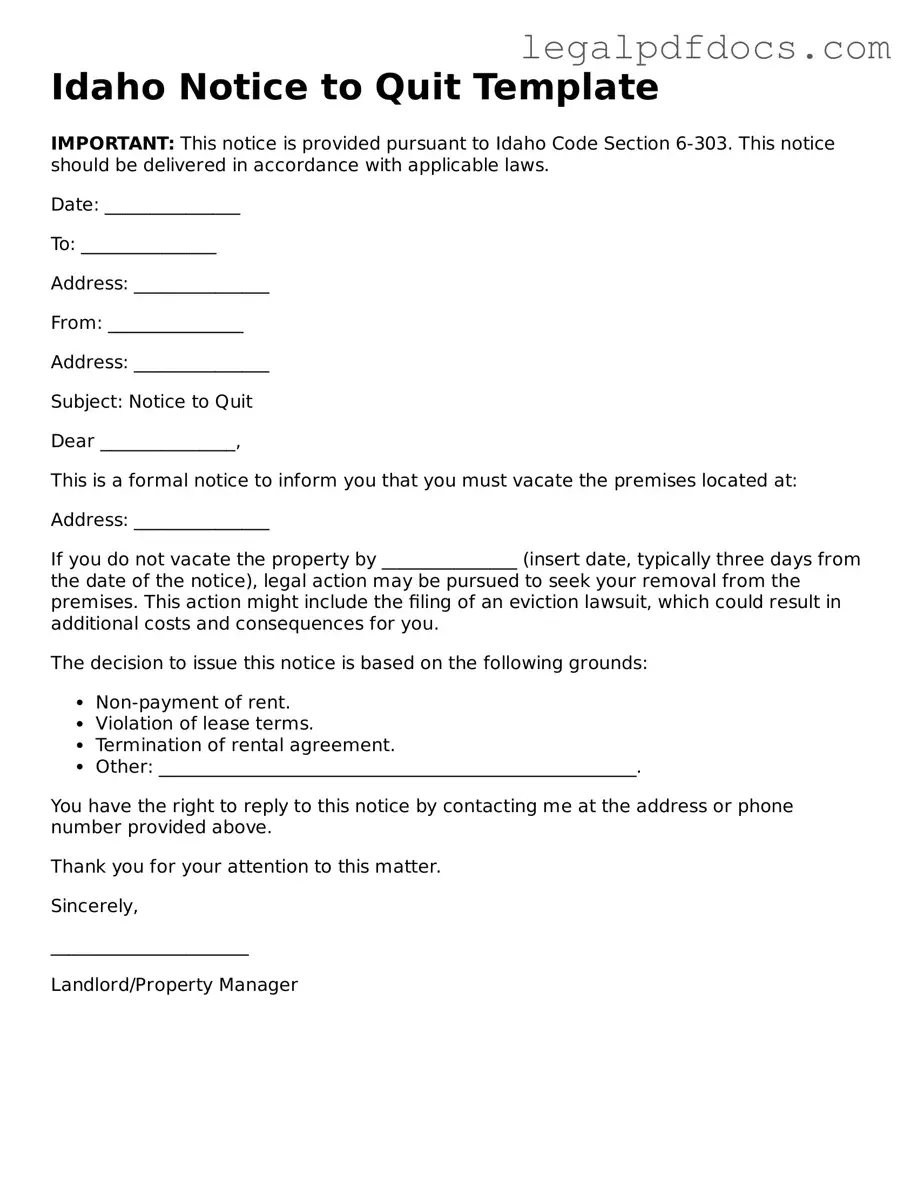Official Notice to Quit Form for Idaho
The Idaho Notice to Quit form is a legal document used by landlords to inform tenants of their intent to terminate a lease agreement. This form outlines the reasons for eviction and provides tenants with a specified time frame to vacate the premises. Understanding this form is crucial for both landlords and tenants to ensure compliance with state laws.
Take action now by filling out the form. Click the button below to get started.
Open Notice to Quit Editor Here
